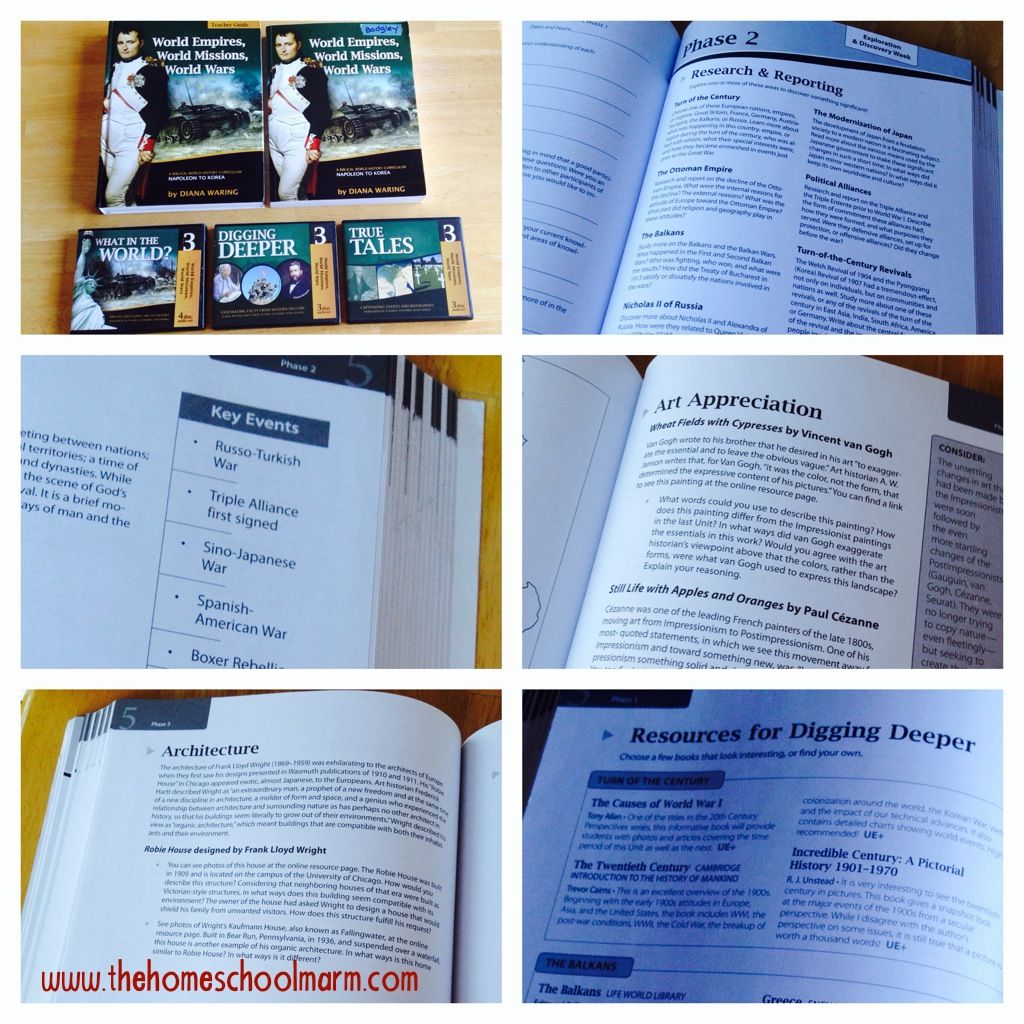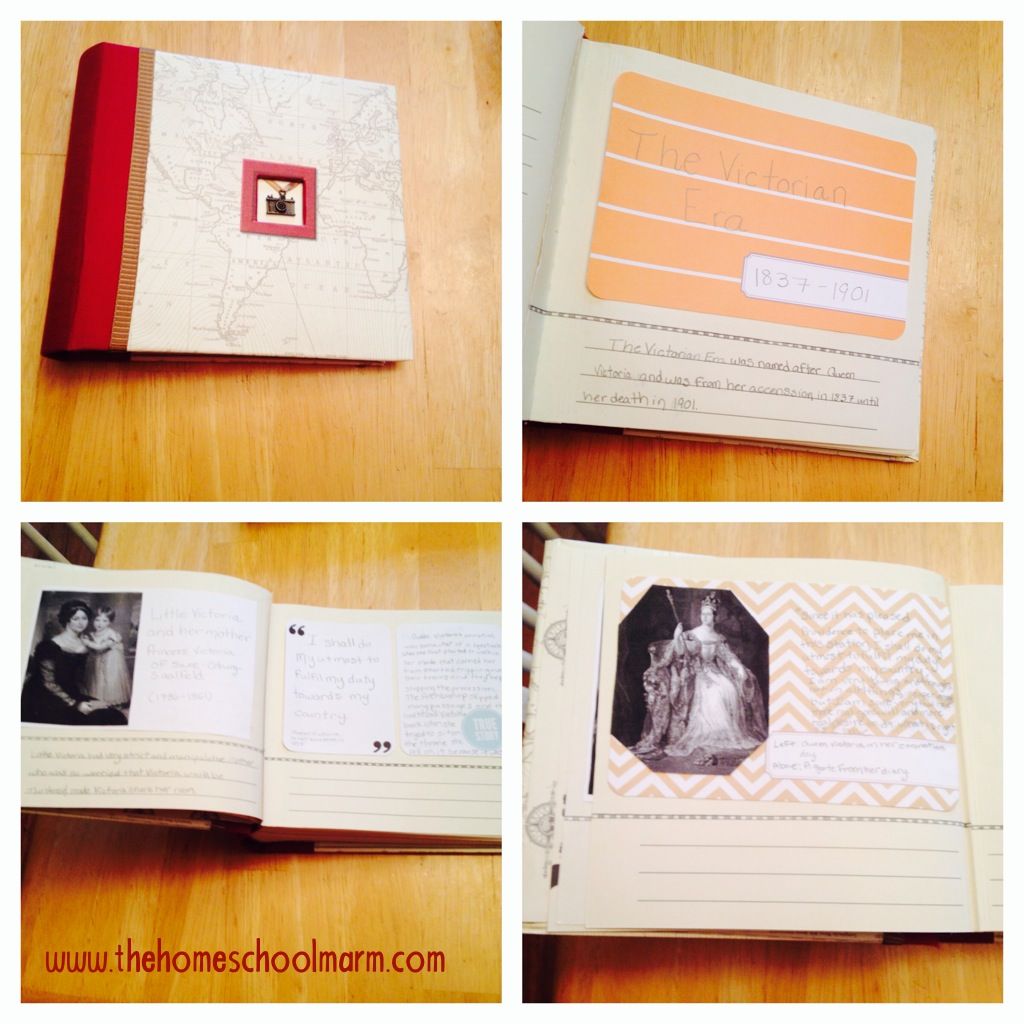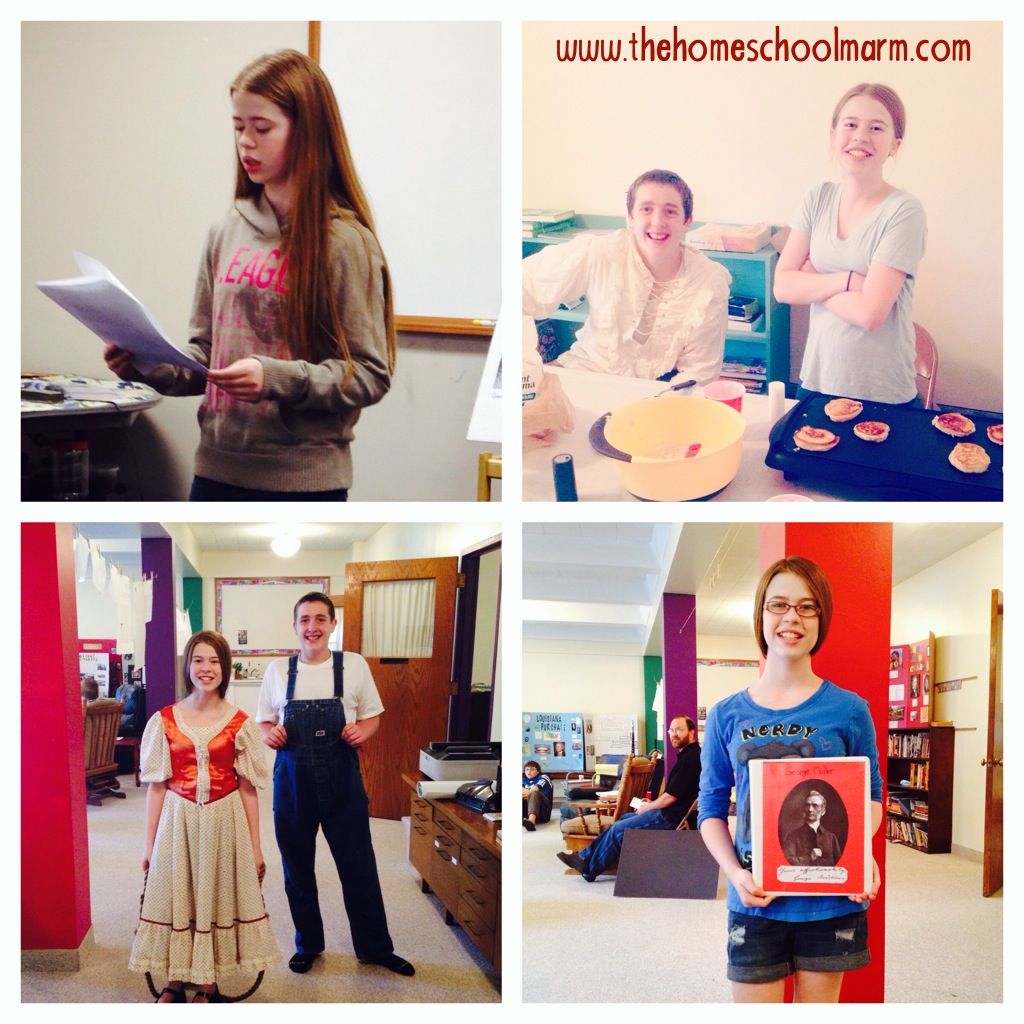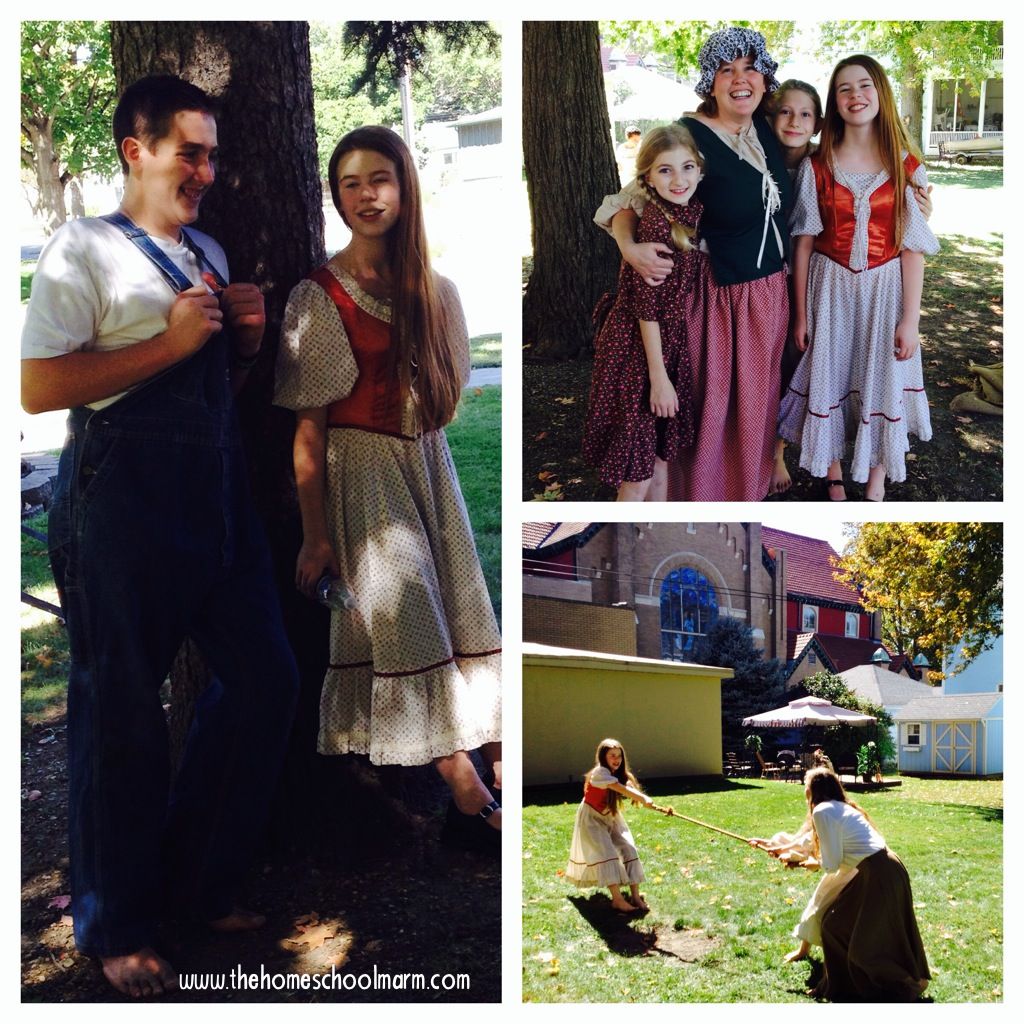Social Studies and Science in Our Classical / Charlotte Mason Homeschool
Friends, welcome to the third week of the Virtual Curriculum Fair hosted by Homeschooling Hearts and Minds. If you have missed my previous posts in this series, I would like to invite you to read Week One (Language Arts) and Week Two (Math and Logic). For the third week, participating bloggers are discussing social studies and social sciences.
Our family enjoys immersing ourselves in periods of history. We are nerdier than your average nerds. Our entire course of study is framed around the respective period of history we select for the year. We travel through history chronologically. I use The Well-Trained Mind book as a primary guideline for determining the cycle of history we study each year.
The Well-Trained Mind recommends the study of history in a set chronological cycle.
Ancients - 5000 B.C. to A.D. 400 (Grades 1, 5, 9)
Medieval / Early Renaissance - A.D. 400 to 1600 (Grades 2, 6, 10)
Late Renaissance / Early Modern - A.D. 1600 to 1850 (Grades 3, 7, 11)
Modern - A.D. 1850 to Present (Grades 4, 8, 12)
Currently, we are studying at the 8th grade level with a few dual-credit classes for high school. I use The Well-Trained Mind as a guide for biographical figures, book recommendations, and information on resources. This year we are studying Modern World History and American History simultaneously. Next year, we plan to cycle back to the Ancients to officially kick-off our high school studies.
After over a decade of studying history chronologically, it is still a challenge to get all of our resources to correlate in a perfect manner. We use many social science resources from several publishers and each company provides a unique chronological timeline of study. I adapt various resources to fit within the general cyclical timeline above.

Basically, we take World Empires, World Missions, World Wars as the spine and we wrap everything around each unit of study. This is not a standard history course! The curriculum is multi-disciplinary and we explore many subjects in an interconnected way. Some of these subjects include:
You might wonder the nuts and bolts of how our studies work. We cover a great deal of ground with this one spine. I will share a brief glimpse into our studies. World Empires, World Wars, World Missions is comprised of Nine Units. Each Unit covers approximately one month of study over four weeks. Each week focuses on a specific phase of study and there are four phases in each unit.
Phase One is the Introductory Week. We immerse ourselves in the research of the period. We read the informative introductory article in the text, listen to Diana's engaging audios, share meaningful discussions with questions provided, and begin selecting books for our research. Our tutorial program (similar to a co-op) meets for Phase One and covers the material for the introductory week. Students begin to explore streams of study as they develop interest in particular topics introduced in the unit.

Phase Two is the Research and Reporting Week. The research week is a focused time of study in a stream of interest provided in the unit. Diana provides introductory material that covers a great deal of topics, historical figures, and events. Students select the topic that interests them most, conducts research via books, resources, and online references. They demonstrate their research through written and/or oral reports, essays, posters, project boards, models, or other method of reporting. We meet with our tutorial program to have a time of sharing. Our class of thirteen students typically follow different streams of study and this provides an opportunity for them to learn from one another in a collaborative environment. For example, in Unit Five (during the month of January) the students reported on World Missions, Wright Brothers, Reconstruction, Russian Revolution, Russo-Japanese War, Abraham Lincoln, and Marie Curie. Each student conducted their own independent research and shared a report with our class.

Phase Three is the Hands-On Week. This phase of the unit is devoted to various hands-on projects. We typically work on many different activities including Lego builds (this week our daughter built a Frank Lloyd Wright inspired home model based on the Willits house), cooking, baking, art explorations, science activities, and other hands-on projects. Our tutorial program meets and explores various hands-on activities together.

Phase Four is the Presentation Week. This is the final phase of the unit and results in a culminating project. We spend the entire month taking in an overview of a specific time period and exploring one or two general topics, historical figures, or events for research. To demonstrate mastery of learning, students create an overall project of their choice as a culminating project. Our tutorial program meets the Phase Four week to present projects. This is a time of peer sharing as all of the students learn from one another. Our daughter has created project boards, scrapbooks, period cuisine, and reports as culminating projects. Diana provides many unique ideas for projects within the curriculum.
One of our favorite aspects of the Phase Four week is our Open House events at our tutorial program. Every month we have a thematic focus for our Open House event where parents, family, and friends gather to hear the presentations. So far this year we have held an Early American Picnic and Games, Historical Costume Party, Civil War Christmas pitch-in meal. We have a few other themed Open House events planned including a World Missions Fair, Eastern European Tea, Great Depression Luncheon, and USO Party.

Overall, we are having a splendid time immersing ourselves in modern world history. The revolutions, battles, and wars we are covering this year are brutal but we find hope in the world missions and gospel exploits by Christ's faithful followers.
Diana Waring's History Revealed programs work very well with the learning styles of my family. I am a parent and tutor with profound ADHD. As an adult, I have learned to manage (most days) my level of distraction and impulsiveness. Our daughter, while never formally diagnosed, has many ADHD similarities and tends to process information in the same manner as I do. We think quite differently and tend to get bored very quickly with one textbook and program. I cannot imagine getting stuck in one textbook for an entire year. Our daughter is the same exact way. Not only do our brains process information quickly, we tend to think about several streams of information all at once. It took me many years to figure out this is why I always wanted to switch our curriculum mid-year. History Revealed is refreshingly freeing as it provides a solid framework and sound structure but it gives students (and parents) complete freedom to take their studies as shallow or deep as they would like to journey. Our family tends to be intense in our immersive style of learning. History Revealed fully supports us by giving us a targeted focus each unit, but sets us free to go exploring to our heart's content. Diana recommends the use of many different books, resources, media, and references each unit. It is a grand smorgasbord of selections! This helps us eliminate the textbook doldrums that we experienced as when we attempted to camp out in only one textbook.
We have found joyous delight in using History Revealed but I do need to offer a caveat for parents and students that tend to have linear thinking. Sometimes the great freedom and wide variety of choices in History Revealed are not what students typically experience. This program is not a traditional textbook! It looks like a textbook but it is not at all what you expect in a textbook. It is a fine guidebook suited for encouraging independent learners. If your student is accustomed to using one textbook over one year with specific boxes to check off for completion, this program may take some time to get used to the rhythm. Our family is already unconventional and out-of-the-box in our thinking and processing styles. So we gleefully picked it up and ran at full speed in our learning! When I speak to moms in our community and at conferences, I sometimes need to remind them that they have freedom, complete freedom, to adapt and modify the program to their own family's needs and learning styles. Another beneficial aspect to mention is that all three levels of the program contain more than enough information that you can cycle through the program more than one year. As I mentioned previously, we study history chronologically. Therefore, we plan to cycle through History Revealed in middle school and at the high school level.
Modern World History includes critical points in our own American History. We doubled up on our history credits this year by taking American History along with Modern World History. Friends, I warned you we are nerds. We are actually overachieving nerds that love to read so we never run out of things to explore. I would not recommend cramming World History and American History in one year of study (for high school credit) unless your students love to study, read, and geek out on all things academic.
Here are a few resources our daughter is using in her studies of American history.
1815 to Present Veritas Press Online Course
Lapbooks with A Journey Through Learning
Freedom: A History of Us
The Story of America
Constitutional Literacy
Words Aptly Spoken: American Documents
Here are some additional history resources that we love and use every year with our overall studies:
Heritage History
Homeschool in the Woods Timeline Figures
The Story of the World series of readers
Map Trek by Knowledge Quest

We use several core reference resources to compile notebooks, timeline studies, and for general reading:
The Kingfisher History Encyclopedia
Usborne Encyclopedia of World History
Streams of Civilization
The Usborne Book of World History Dates
DK Smithsonian Timelines of History
Some of her current favorites include:
A Tale of Two Cities
Jane Eyre
Pride and Prejudice
Uncle Tom's Cabin
Horatio Hornblower series
Carry On, Mr. Bowditch
Les Miserables
Little Women
The Autobiography of George Mueller
She also enjoys the historical narratives at Heritage History.
Friends, what are your favorite resources for Social Studies and Sciences?
Please be sure to visit the other blogging friends participating in the Virtual Curriculum Fair!
Exploring World History Through the Eyes of Scientists by Susan @ Homeschooling Hearts & Minds
Exploring Our World With Social Studies by Stacie @ Super Mommy to the Rescue
Relaxed Homeschooling: Science and Social Studies in the Early Elementary Years by Brittney @ Mom's Heart
Living History by Sarah @ Delivering Grace
Classically Influenced, Project Strong, Adaptable Middle School History by Christy @ Unexpected Homeschool
Primary Sources for Delight-Directed History by Susan @ The Every Day of Education
Watching History, or Using Video Courses for Social Studies by Debra @ Footprints in the Butter
Exploring our World: High School Studies of Ancient History, American Government and Economics by Laura @ Day by Day in Our World
History, Geography, and Worldview Lessons in Our Homeschool by Jennifer @ A Glimpse of Our Life
Our Curriculum Choices 2015 ~ Science, History & Geography by Renata @ Sunnyside Farm Fun
Our Favorites for History, Geography, and Science by Becky @ Milo & Oats
Globe Trotting by Lisa @ Golden Grasses
Around The World by Michele @ Family, Faith and Fridays
Bible-Based History Curriculum and Resources by Tauna @ Proverbial Homemaker
13 Living Book History Series for a Charlotte Mason Based Homeschool by Chelli @ The Planted Trees
Social Studies and Science in Our Classical / Charlotte Mason Homeschool by Sharra @ The Homeschool Marm
The Science Life by Laura @ Four Little Penguins
History, Geography Science for 2015 by Chareen @ Every Bed of Roses
History Social Studies and Science...VCF Week 3 by Denise @ Fullnest
Learning About our World and History by Joelle @ Homeschooling for His Glory
Taking the Mystery Out of History and Other Subjects Too With Our Favorite History Curriculum by Amy @ One Blessed Mamma
Our family enjoys immersing ourselves in periods of history. We are nerdier than your average nerds. Our entire course of study is framed around the respective period of history we select for the year. We travel through history chronologically. I use The Well-Trained Mind book as a primary guideline for determining the cycle of history we study each year.
The Well-Trained Mind recommends the study of history in a set chronological cycle.
Ancients - 5000 B.C. to A.D. 400 (Grades 1, 5, 9)
Medieval / Early Renaissance - A.D. 400 to 1600 (Grades 2, 6, 10)
Late Renaissance / Early Modern - A.D. 1600 to 1850 (Grades 3, 7, 11)
Modern - A.D. 1850 to Present (Grades 4, 8, 12)
Currently, we are studying at the 8th grade level with a few dual-credit classes for high school. I use The Well-Trained Mind as a guide for biographical figures, book recommendations, and information on resources. This year we are studying Modern World History and American History simultaneously. Next year, we plan to cycle back to the Ancients to officially kick-off our high school studies.
After over a decade of studying history chronologically, it is still a challenge to get all of our resources to correlate in a perfect manner. We use many social science resources from several publishers and each company provides a unique chronological timeline of study. I adapt various resources to fit within the general cyclical timeline above.
World History and Geography
This year we are studying the era AD 1800 to 1950 for our studies in history and geography. Our core curriculum spine this year is World Empires, World Missions, World Wars in the History Revealed series by Diana Waring. One thing I absolutely love about Diana's resources is they are not traditional textbooks. The History Revealed program is a fantastic guidebook to a delight-directed, thematic unit-study through history eras. This program is even complimentary to Charlotte Mason and Classical educational philosophies!
Basically, we take World Empires, World Missions, World Wars as the spine and we wrap everything around each unit of study. This is not a standard history course! The curriculum is multi-disciplinary and we explore many subjects in an interconnected way. Some of these subjects include:
- Bible
- History
- Geography
- Literature
- Music
- Art
- Architecture
- Science
- investigating/reporting
- mapping
- creative writing
- charting/compiling
- poetry
- graphic design
- art
- dramas
- kits
- cooking
- musical performances
- Lego building
You might wonder the nuts and bolts of how our studies work. We cover a great deal of ground with this one spine. I will share a brief glimpse into our studies. World Empires, World Wars, World Missions is comprised of Nine Units. Each Unit covers approximately one month of study over four weeks. Each week focuses on a specific phase of study and there are four phases in each unit.
Phase One is the Introductory Week. We immerse ourselves in the research of the period. We read the informative introductory article in the text, listen to Diana's engaging audios, share meaningful discussions with questions provided, and begin selecting books for our research. Our tutorial program (similar to a co-op) meets for Phase One and covers the material for the introductory week. Students begin to explore streams of study as they develop interest in particular topics introduced in the unit.

Phase Two is the Research and Reporting Week. The research week is a focused time of study in a stream of interest provided in the unit. Diana provides introductory material that covers a great deal of topics, historical figures, and events. Students select the topic that interests them most, conducts research via books, resources, and online references. They demonstrate their research through written and/or oral reports, essays, posters, project boards, models, or other method of reporting. We meet with our tutorial program to have a time of sharing. Our class of thirteen students typically follow different streams of study and this provides an opportunity for them to learn from one another in a collaborative environment. For example, in Unit Five (during the month of January) the students reported on World Missions, Wright Brothers, Reconstruction, Russian Revolution, Russo-Japanese War, Abraham Lincoln, and Marie Curie. Each student conducted their own independent research and shared a report with our class.

Phase Three is the Hands-On Week. This phase of the unit is devoted to various hands-on projects. We typically work on many different activities including Lego builds (this week our daughter built a Frank Lloyd Wright inspired home model based on the Willits house), cooking, baking, art explorations, science activities, and other hands-on projects. Our tutorial program meets and explores various hands-on activities together.

Phase Four is the Presentation Week. This is the final phase of the unit and results in a culminating project. We spend the entire month taking in an overview of a specific time period and exploring one or two general topics, historical figures, or events for research. To demonstrate mastery of learning, students create an overall project of their choice as a culminating project. Our tutorial program meets the Phase Four week to present projects. This is a time of peer sharing as all of the students learn from one another. Our daughter has created project boards, scrapbooks, period cuisine, and reports as culminating projects. Diana provides many unique ideas for projects within the curriculum.
One of our favorite aspects of the Phase Four week is our Open House events at our tutorial program. Every month we have a thematic focus for our Open House event where parents, family, and friends gather to hear the presentations. So far this year we have held an Early American Picnic and Games, Historical Costume Party, Civil War Christmas pitch-in meal. We have a few other themed Open House events planned including a World Missions Fair, Eastern European Tea, Great Depression Luncheon, and USO Party.

Overall, we are having a splendid time immersing ourselves in modern world history. The revolutions, battles, and wars we are covering this year are brutal but we find hope in the world missions and gospel exploits by Christ's faithful followers.
Diana Waring's History Revealed programs work very well with the learning styles of my family. I am a parent and tutor with profound ADHD. As an adult, I have learned to manage (most days) my level of distraction and impulsiveness. Our daughter, while never formally diagnosed, has many ADHD similarities and tends to process information in the same manner as I do. We think quite differently and tend to get bored very quickly with one textbook and program. I cannot imagine getting stuck in one textbook for an entire year. Our daughter is the same exact way. Not only do our brains process information quickly, we tend to think about several streams of information all at once. It took me many years to figure out this is why I always wanted to switch our curriculum mid-year. History Revealed is refreshingly freeing as it provides a solid framework and sound structure but it gives students (and parents) complete freedom to take their studies as shallow or deep as they would like to journey. Our family tends to be intense in our immersive style of learning. History Revealed fully supports us by giving us a targeted focus each unit, but sets us free to go exploring to our heart's content. Diana recommends the use of many different books, resources, media, and references each unit. It is a grand smorgasbord of selections! This helps us eliminate the textbook doldrums that we experienced as when we attempted to camp out in only one textbook.
We have found joyous delight in using History Revealed but I do need to offer a caveat for parents and students that tend to have linear thinking. Sometimes the great freedom and wide variety of choices in History Revealed are not what students typically experience. This program is not a traditional textbook! It looks like a textbook but it is not at all what you expect in a textbook. It is a fine guidebook suited for encouraging independent learners. If your student is accustomed to using one textbook over one year with specific boxes to check off for completion, this program may take some time to get used to the rhythm. Our family is already unconventional and out-of-the-box in our thinking and processing styles. So we gleefully picked it up and ran at full speed in our learning! When I speak to moms in our community and at conferences, I sometimes need to remind them that they have freedom, complete freedom, to adapt and modify the program to their own family's needs and learning styles. Another beneficial aspect to mention is that all three levels of the program contain more than enough information that you can cycle through the program more than one year. As I mentioned previously, we study history chronologically. Therefore, we plan to cycle through History Revealed in middle school and at the high school level.
Modern World History includes critical points in our own American History. We doubled up on our history credits this year by taking American History along with Modern World History. Friends, I warned you we are nerds. We are actually overachieving nerds that love to read so we never run out of things to explore. I would not recommend cramming World History and American History in one year of study (for high school credit) unless your students love to study, read, and geek out on all things academic.
Here are a few resources our daughter is using in her studies of American history.
American Studies
Explorers to 1815 Veritas Press Online Course1815 to Present Veritas Press Online Course
Lapbooks with A Journey Through Learning
Freedom: A History of Us
The Story of America
Constitutional Literacy
Words Aptly Spoken: American Documents
Here are some additional history resources that we love and use every year with our overall studies:
Heritage History
Homeschool in the Woods Timeline Figures
The Story of the World series of readers
Map Trek by Knowledge Quest

We use several core reference resources to compile notebooks, timeline studies, and for general reading:
The Kingfisher History Encyclopedia
Usborne Encyclopedia of World History
Streams of Civilization
The Usborne Book of World History Dates
DK Smithsonian Timelines of History
Historical Literature
We take a heavy literature-based approach in our studies of history and geography. Each unit our daughter selects literature that corresponds with her studies. She reads classic works which fit in with our time period of study.Some of her current favorites include:
A Tale of Two Cities
Jane Eyre
Pride and Prejudice
Uncle Tom's Cabin
Horatio Hornblower series
Carry On, Mr. Bowditch
Les Miserables
Little Women
The Autobiography of George Mueller
She also enjoys the historical narratives at Heritage History.
Friends, what are your favorite resources for Social Studies and Sciences?
Please be sure to visit the other blogging friends participating in the Virtual Curriculum Fair!
Exploring World History Through the Eyes of Scientists by Susan @ Homeschooling Hearts & Minds
Exploring Our World With Social Studies by Stacie @ Super Mommy to the Rescue
Relaxed Homeschooling: Science and Social Studies in the Early Elementary Years by Brittney @ Mom's Heart
Living History by Sarah @ Delivering Grace
Classically Influenced, Project Strong, Adaptable Middle School History by Christy @ Unexpected Homeschool
Primary Sources for Delight-Directed History by Susan @ The Every Day of Education
Watching History, or Using Video Courses for Social Studies by Debra @ Footprints in the Butter
Exploring our World: High School Studies of Ancient History, American Government and Economics by Laura @ Day by Day in Our World
History, Geography, and Worldview Lessons in Our Homeschool by Jennifer @ A Glimpse of Our Life
Our Curriculum Choices 2015 ~ Science, History & Geography by Renata @ Sunnyside Farm Fun
Our Favorites for History, Geography, and Science by Becky @ Milo & Oats
Globe Trotting by Lisa @ Golden Grasses
Around The World by Michele @ Family, Faith and Fridays
Bible-Based History Curriculum and Resources by Tauna @ Proverbial Homemaker
13 Living Book History Series for a Charlotte Mason Based Homeschool by Chelli @ The Planted Trees
Social Studies and Science in Our Classical / Charlotte Mason Homeschool by Sharra @ The Homeschool Marm
The Science Life by Laura @ Four Little Penguins
History, Geography Science for 2015 by Chareen @ Every Bed of Roses
History Social Studies and Science...VCF Week 3 by Denise @ Fullnest
Learning About our World and History by Joelle @ Homeschooling for His Glory
Taking the Mystery Out of History and Other Subjects Too With Our Favorite History Curriculum by Amy @ One Blessed Mamma



Comments